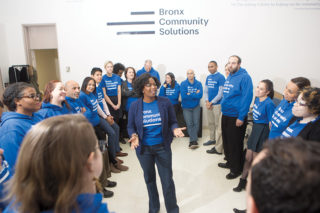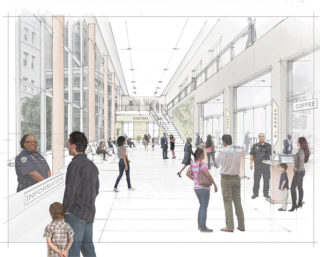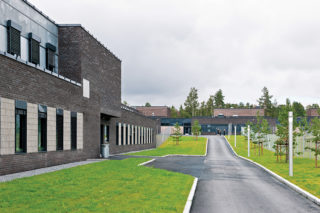
During the week we wrapped up this issue, a COVID-19 vaccine began to be distributed to healthcare workers, the electoral college cast their votes for president-elect Joe Biden, and the AIA’s Code of Ethics and Professional Con-duct was amended, prohibiting members from “the design of spaces intended for execution, torture, and prolonged solitary confinement.” The year 2020 was a time of tremendous upheaval, and much of that represented positive change. But how does change become progress? Perhaps it’s measured in the ripple effects. In late September, two-and-a-half months before AIA National changed its Code of Conduct, the Board of the AIA New York Chapter issued a statement on criminal justice facilities, “calling on architects no longer to design unjust, cruel, or harmful spaces of incarceration within the current United States justice system, such as prisons, jails, detention centers, and police stations. We instead urge our members to shift their efforts towards supporting the creation of new systems, processes, and typologies based on prison reform, alternatives to imprisonment, and restorative justice.” The statement continued: “We will advocate that AIA National, AIA New York State, and our fellow chapters adopt similar positions to discourage design of criminal justice facilities that uphold the current system.”
It’s a system that is nearly invisible to those outside it, and that fact alone represents a fundamental flaw. In her milestone book Are Prisons Obsolete? (2003), scholar and activist Angela Y. Davis advocates for the abolition of prisons in the U.S., and describes prisons functioning “ideologically as an abstract site into which undesirables are deposited, relieving us of the responsibility of thinking about the real issues afflicting those communities from which prisoners are drawn in such disproportionate numbers…it relieves us of the responsibility of engaging with the problems of our society, especially those produced by racism and, increasingly, global capitalism.”
In this issue we consider how design intersects concepts of justice today. We look beyond the design of spaces and environments to the design of programming that supports restorative justice initiatives, which emphasize repairing harm and engaging the community. We also wanted to give more visibility to incarcerated individuals, acknowledging that the current system often strips them of the dignity and signifiers of identity that make us human. As many participants in this issue reiterated, spaces of justice must first and foremost be just spaces.
This is our first issue since becoming a signatory of the “Say It With Media” pledge of Beyond the Built Environment (BBE), a new organization that addresses issues of inequality in architecture at various stages of the architecture pipeline. The BBE platform “promotes agency among diverse audiences and advocates for equity in the built environment” in part through architecture media. With this pledge, we commit to showing the work of diverse designers and address-ing architecture’s role historically in systems that perpetuate inequality. I’m proud that Oculus has made this commitment, and we thank AIANY board member and BBE founder Pascale Sablan, AIA, NOMA, LEED AP, for challenging us to join. And I also congratulate Pascale for being the recipient of the 2021 Whitney M. Young Award from AIA National! This award goes to an architect who “embodies social responsibility and actively addresses a relevant issue, such as affordable housing, inclusiveness, or universal access.” Pascale, who advocates tirelessly for the BBE mission, is one of the youngest ever awardees.
And more awards to come! Our next issue celebrates the winners of the 2021 AIANY Design Awards, and we’ll also profile the biannual winners of the New Practices Awards. Welcome, 2021!
READ MORE ON DESIGN + JUSTICE
Michelle Alexander, The New Jim Crow (2010, 10th anniversary republication 2020)
Isabelle Kirkham-Lewitt, Paths to Prison: On the Architectures of Carcerality (2020)
Greg Berman and Julian Adler, Start Here: A Road Map to Reducing Mass Incarceration (2018)
Sasha Costanza-Chock, Design Justice: Community-Led Practices to Build the Worlds We Need (2020)















